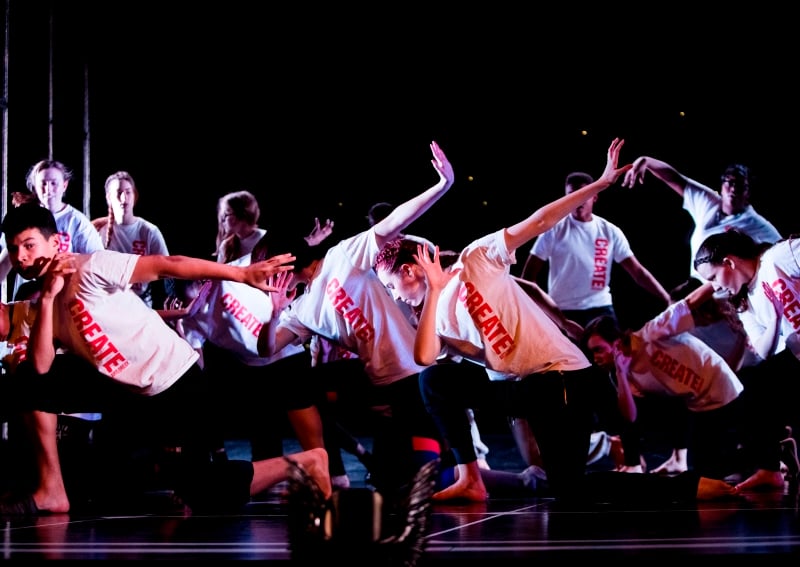
Photo: Alicia Clarke
How to… run wellbeing-boosting arts projects
Running a successful arts workshop is not easy, but remembering to be pragmatic and as collaborative as possible is key, says Nicky Goulder.
Being creative – having an outlet for opinions and emotions you can’t express verbally – is good for you. That’s something anyone who has ever put brush to canvas, taken a photo or even danced around their kitchen or sung in the shower can attest to. Personal experience is backed-up by Arts Council England research: people with a higher frequency of engagement with arts or culture have a higher subjective wellbeing.
But for the people who are perhaps most in need of health and wellbeing benefits, the chances to participate can be slim. If you’re busy trying to juggle schoolwork with caring for your mum who has a disability, you’re probably unlikely to prioritise joining a drama group even in the event that the funding required is available. If your main focus is finding a shelter to sleep in that night, you’re not going to spend time and money on a visual art class. If you have a disability, creative activity organisers may simply not have given appropriate thought to accessibility to make it possible for you to join in.
Create designs and runs free collaborative creative arts projects for people who have the least access to such things, but perhaps the most to gain from taking part. They are led by exceptional professional dancers, actors, writers, musicians, filmmakers or visual artists. Here are some tips on how you can use creativity to boost the health and wellbeing of disadvantaged or vulnerable people.
You don’t know best and neither do we
There’s no such thing as a ‘model’ or ‘standard’ creative workshop. Each group and each individual is unique. Each Create project is designed with a partner organisation that specialises in working with the target participants, and individually tailored to reflect these participants’ interests.
For example our Inside Stories programme, which takes creative writers and illustrators into prison to enable young fathers to produce storybooks for their children, is very different from our art:links programme where older people make music to combat loneliness and isolation. The art form, structure and themes of our programmes are specific to the needs of the participant group.
Make a safe, friendly, welcoming, supportive environment
Creativity doesn’t come easily to everyone. It’s vital to establish a welcoming, friendly and supportive atmosphere in which everyone feels their ideas are valued.
The social aspect of the programmes can be as important as the resulting artwork, where an aim of the project is to give LGBT young people the opportunity to develop peer-support networks.
Have great facilitators to lead the workshops
Being a talented artist doesn’t necessarily translate to being a fantastic workshop leader. Promoting positive communication and encouraging people to express themselves are specific skills, particularly in programmes with vulnerable people.
To run empowering workshops you need leaders who are great artists and great facilitators. Create has launched a scheme called Nurturing Talent, which gives artists at the start of their career the opportunity to benefit from training coupled with time in workshops shadowing established artists, expanding their skill base and exposing them to new experiences and perspectives.
Have a starting point, but let the participants take the lead
In your planning with a partner organisation, you’ve carefully considered which artforms and themes will most benefit the group you’re working with. Ideally, these will have been drawn from prior consultation with the participants. But the project isn’t for you and now it’s time for the participants’ creativity to be unleashed – if their energy and imagination takes the art in a direction you didn’t anticipate, go with it, remembering of course that you’ll need to achieve the agreed project outputs and outcomes!
Make it collaborative
Giving people the opportunity to express personal opinions and emotions is important, but so is engendering a feeling of camaraderie and shared values. Collaborative creativity is a fantastic way of building understanding and enjoying shared experiences. The best projects allow for personal expression within a structure of cooperation.
Create’s national creative:connection programme brings together young people with and without disabilities to be creative, whether this is devising a dance, making music or producing a sculpture. Each project encourages the young people to work together, creatively following a group theme whilst allowing space for individuality.
During a recent project, in Cumbria for example, the participants created a sculpture garden made from local slate that explored their emotions related to flooding in the region.
Each programme is a learning experience for you as well as your participants
Have a robust evaluation system in place for each project, ask questions that can lead to practical actions and, if feedback suggests you could change something for the better, make sure you do. Create evaluates every project immediately after it has finished and re-evaluates two each year to assess longer-term impact.
Nicky Goulder is Co-Founder & Chief Executive of Create.
createarts.org.uk
Tw twitter.com/createcharity
FB www.facebook.com/create.transforming.lives
Join the Discussion
You must be logged in to post a comment.